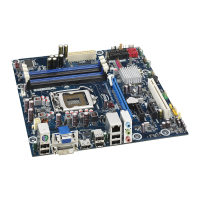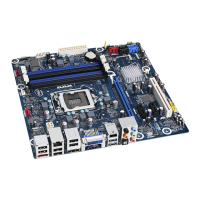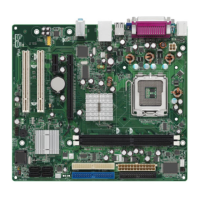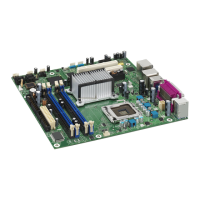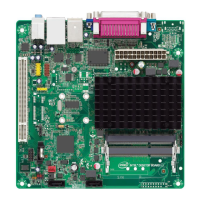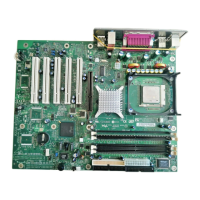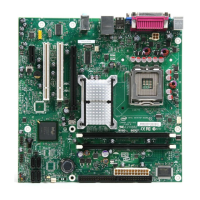24 Intel
®
440Bx Scalable Performance Board Development Kit Manual
Theory of Operation
3.2.14 USB
USB support is provided through the 82371EB PCI-to-ISA/IDE Xcelerator (PIIX4E) and can be
used through connector J2.
3.2.15 RS232 Ports
Two serial I/O ports provided by the SMC FDC37B787 SuperI/O device. Two 9-pin RS232
connectors are provided on a single stacked connector (J4).
3.2.16 IEEE 1284 Parallel Port
One 25-pin IEEE 1284 parallel port connector controlled by the SMC FDC37B787 SuperI/O
device is provided (J3).
3.2.17 PCI Connectors
Three industry standard 32-bit, 5-V PCI connectors are provided on the evaluation board. The
connectors are designed to handle either a 5-V only card or a universal card. 3.3-V cards are not
supported.
3.2.18 ISA Connectors
Two 16-bit ISA connectors are provided on the evaluation board.
3.2.19 AGP Connector
AGP support is provided through the 82443BX Host Bridge/Controller. One industry standard
AGP connector (J13) is provided on the evaluation board.
3.2.20 Post Code Debugger
The evaluation board has an on-board Post Code Debugger. Data from any program that does an I/
O write to 0080H is latched and displayed on the two LEDs (U12 and U13). During BIOS startup,
codes are posted to these LEDs to indicate what the BIOS is doing. Application programs can post
their own data to these LEDs by writing to I/O address 0080H.
3.2.21 Clock Generation
There are two devices on the baseboard which generate and distribute the clocks used by the entire
system. These are the CY2280 clock synthesizer and the CY2318NZ clock buffer.
The CY2280 generates the clocks for the PGA370 processor, Host Bridge/Controller, cache, PCI,
USB and ISA bus. The processor side bus clock runs at 66 or 100 MHz. The PCI clocks run at
33 MHz. This device is capable of spread spectrum clocking. If spread spectrum clocking is
enabled, a 0.5% down spread will be introduced in the processor and PCI clocks.

